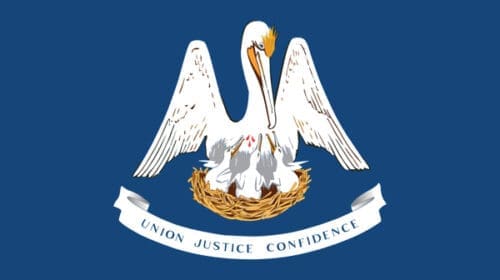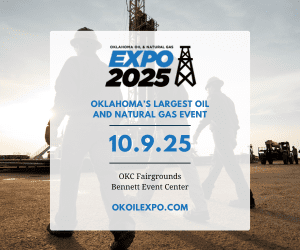Despite the industry’s ongoing struggle to maintain momentum amid low oil prices, it made significant progress on many fronts this year. In Texas, a fight over a local fracking ban approved by voters in Denton in 2014 was repealed by local authorities in June. In Oklahoma, industry and regulators took steps throughout the year to address seismic activity through new risk mitigation measures that reduce wastewater injections in the Arbuckle formation. In Louisiana, four major LNG export facilities – Lake Charles, Magnolia, Calcasieu Pass, Cameron – have moved steadily through FERC permitting. And on the national stage, industry won a huge victory in December when President Obama signed an omnibus spending bill that included a repeal of the crude oil export ban.
Here’s a review of 10 of the most popular stories on OilmanMagazine.com this year. Click the links provided to read the full story. If you have a comment on any of these stories, tweet it to @OilmanMagazine.
No. 10
The fracking boom in Texas came under threat from increasing environmental regulations.
EPA Rules Threaten the Fracking Boom in Texas
Texas has helped to lead the way in making the U.S. a leader in abundant and low-cost energy. New rules, however, are threatening the oil and gas revolution. The U.S. Environmental Protection Agency (EPA) is leading the way on the new rules that could hinder the progress being made…
No. 9
A new joint venture began development in Northwest Cana Woodford.
Continental Joint Venture to Develop Northwest Cana Woodford Shale
Continental Resources, Inc., has formed a joint venture with a wholly owned U.S. subsidiary of South Korea-based SK E&S Co. Ltd to jointly develop a portion of Continental’s Northwest Cana Woodford natural gas assets, primarily in Blaine and Dewey counties, Okla…
No. 8
The Denton, Texas, fracking ban elicited an aggressive response from industry and regulators.
Texas Passes Law Protecting State Regulation of Oil and Gas Industry
Texas Gov. Greg Abbott on May 18 signed House Bill (HB) 40, an act relating to the exclusive jurisdiction of Texas to regulate oil and gas operations in the state and the express preemption of local regulation of those operations.
“HB 40 does a profound job of helping to protect private property rights here in the State of Texas, ensuring those who own their own property will not have the heavy hand of local regulation deprive them of their rights,” Gov. Abbot said in a May 18 statement. “This law ensures that Texas avoids a patchwork quilt of regulations that differ from region to region, differ from county to county or city to city, [and] strikes a meaningful and correct balance between local control and preserving the state’s authority to ensure that regulations are even-handed and do not hamper job creation.”…
No. 7
Congressional leadership made a deal that finally repealed the ban on U.S. crude oil exports.
Congress Agrees to Lift Oil Export Ban Under US Spending Bill
In a dramatic turn of events last week, Democrats and Republicans in Congress reached a compromise on the federal government omnibus spending bill that lifts the 40-year ban on U.S. crude oil exports and gives clean energy companies an extension on tax credits set to expire this year and next. President Barack Obama signed the bill on Dec. 18…
No. 6
API reported in 3Q15 that oil and natural gas drilling was down by 39% and 45%
API: Oil and Natural Gas Drilling Down in 3Q15
Estimated total U.S. oil and natural gas well completions decreased by 44% in the third quarter of 2015 compared to year-ago levels, according to the American Petroleum Institute’s (API) 2015 Quarterly Well Completion Report, Third Quarter…
No. 5
Fixed platforms, tension leg platforms, spar platforms – Here’s a look at your exposure.
Fixed or Floating: What Is Your Exposure?
Fixed platforms, tension leg platforms, spar platforms, drill boats, jack-up rigs and countless other contrivances are used in oil exploration and production on the Gulf of Mexico. Whether a structure is considered to be a vessel or not affects the types of litigation an owner or operator may be subject to in the event of a workplace accident. The determination of vessel status also governs what type of insurance coverage should be procured to protect the interests of the owner/operator/contractor…
No. 4
Recovery of drilling wastes is an examined as a cost-effective and practical in this article on rotary kilns.
Using Rotary Kilns for Processing Drilling Wastes
Even with the fluctuations in demand in the oil and gas industry, the existence of drilling wastes and the need to safely dispose of that waste remains constant. Operators often seek innovative and economical ways to handle, treat and even recover wastes from drilling processes…
No. 3
This article discussed how blend technology, communication and equipment operation eliminate downtime.
Electronic Tong Testing Stand Enables Off-Site Associate Training
Information and technology are key components of success in the oil and gas industries. Being able to assimilate and manage large amounts of data between experts and business associates ensures that a team stays connected and works effectively. One of the most important jobs on the oilfield is ensuring that a team of associates is well-trained and well-equipped to manage the demands and complications on the oilfield. As the need for skilled field workers increases, the need for comprehensive testing and off-site training is growing as well…
No. 2
A new geological assessment of the Barnett Shale gas resource is about twice previous estimates
USGS Increases Assessment of Barnett Shale Gas Resource by 26.8 Trillion Cubic Feet
The U.S. Geological Survey (USGS) recently increased its assessment of the undiscovered, technically recoverable shale gas resource in the Mississippian Barnett Shale by 26.8 trillion cubic feet.
In an update of its 2003 assessment, USGS said the Barnett Shale within the Bend Arch-Fort Worth Basin Province of north-central Texas has mean volumes of 53 trillion cubic feet of shale gas, 172 million barrels of shale oil and 176 million barrels of natural gas liquids…
No. 1
Check out these ideas for improving a saltwater disposal business in our top story of 2015.
Improving SWD Value & Salability During Challenging Times
The saltwater disposal (SWD) industry has changed significantly over the last five years thanks to advances in completion technologies such as fracking. SWDs have popped up on every corner, some are next door or right across the street from each other, all competing for their share of the increasing waste water market. Just a few years ago, disposal operators were living “high-on-the-hog” with impressive volumes of flowback water being transported to their facilities for disposal. This water contained large percentages of oil which could be collected and sold, further driving site profitability…














